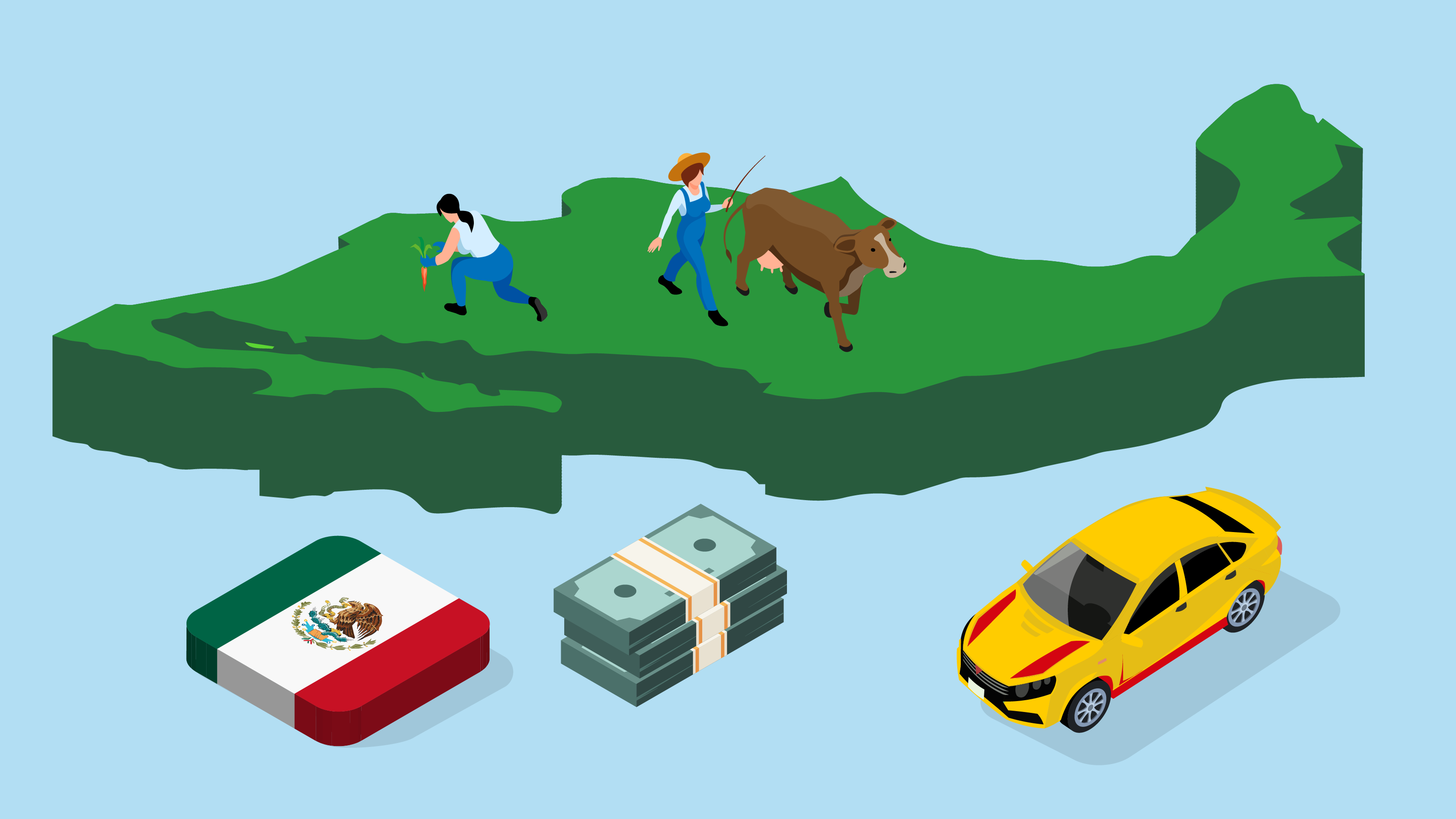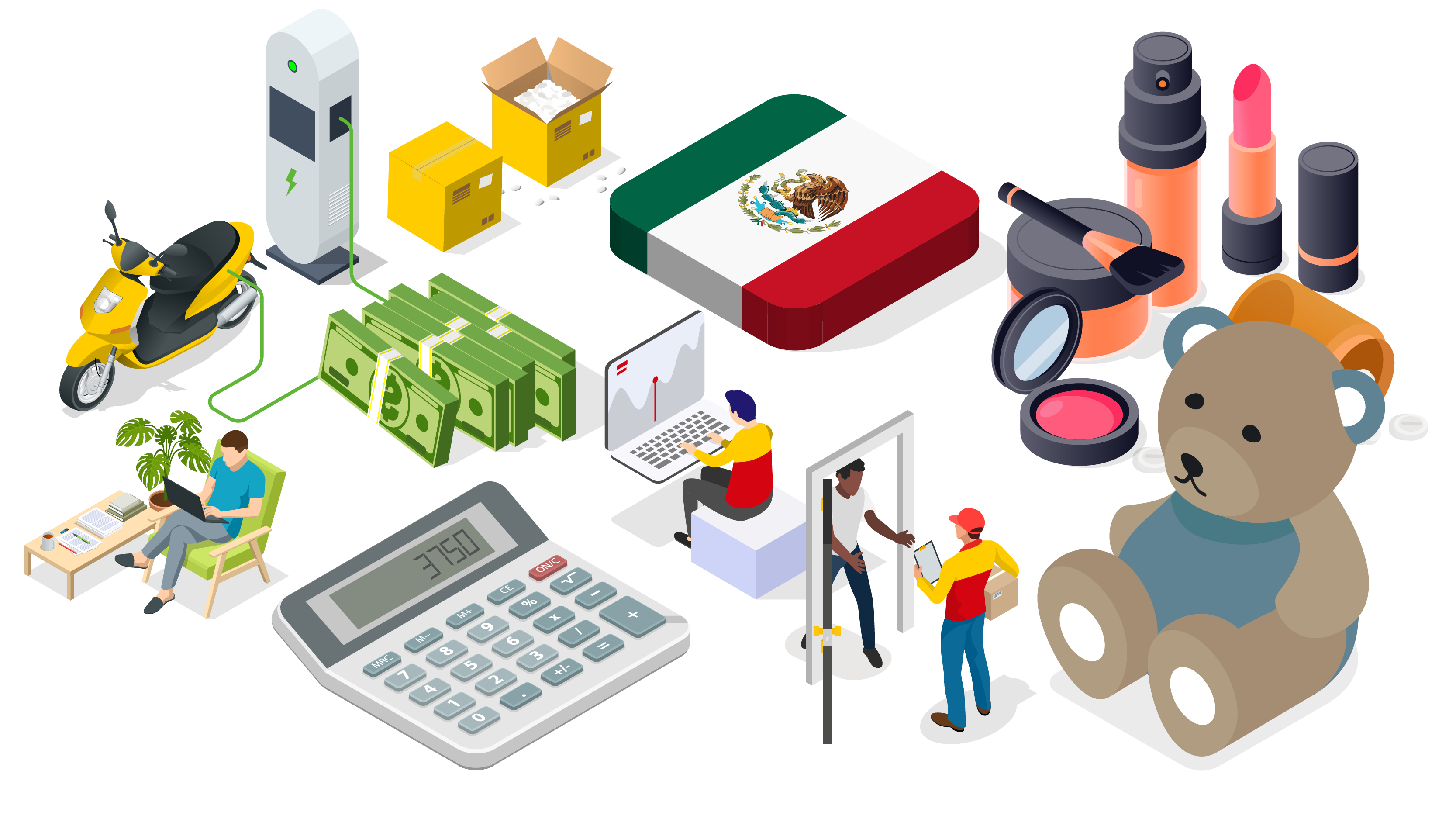While Mexico may be known for its vibrant Day of the Dead festival, its e-commerce sector is equally lively. In fact, the country boasts the second-largest e-commerce market in Latin America, trailing only Brazil(1). This presents significant market opportunities for international e-commerce businesses. However, understanding and complying with Mexico's import and export procedures is crucial to navigate this dynamic market successfully.
With opportunities so plentiful, all you need is an international shipping partner and some local market insights, and you’ll be ready to cash in! This guide explores how to export to Mexico, including the consumer trends and customs regulations you should know.

H2 Mexico’s trade landscape and export growth
1.45% GDP growth in 2024
Mexico’s economy continues to impress. GDP growth is forecast to continue at 1.35% to 2.27% through to 2029(2).

The world’s 12th largest economy(3)
And the second largest in Latin America after Brazil.

101 million Internet users
Mexico has the 8th largest digital population in the world(4), with an 83.2% internet penetration rate(5).

9.62% e-commerce growth
Revenue in Mexico’s e-commerce market is predicted to grow at an annual rate (CAGR 2025-2029) of 9.62%(6).

US$547.18 online revenue per user
Mexico’s e-commerce average revenue per user (ARPU) is expected to amount to US$547.186.
Understanding Mexican trade regulations
Under Mexico’s regulations, certain product categories like food, electronics, and pharmaceuticals require specific permits and paperwork.
Additionally, import duties and taxes may significantly impact your shipping costs. Shipments exceeding US$50 are subject to taxation, and a Value Declaration form will be needed for those over US$10,000. Weight limitations also apply, with a maximum of 50 kgs per shipment.
By ensuring product compliance with local regulations, you’re better prepared to avoid delays or fines when exporting to Mexico.
Essential documentation for exporting
As part of Mexico’s export procedures, you’ll need the following export documentation:
Commercial Invoice: Details the transaction between buyer and seller, including product descriptions and values.
Packing List: Provides a detailed inventory of the shipment's contents, aiding customs inspections.
Certificate of Origin: Verifies the goods' country of origin, potentially affecting tariffs.
Bill of Lading or Air Waybill: Serves as a receipt for shipment and contract of carriage.
Regulated items and packaging requirements
Like many countries, Mexico has strict rules to protect its agricultural industries. Therefore, it's crucial to be aware of regulations concerning product types and packaging when exporting to Mexico.
In particular, any raw wood used in packaging, including pallets, must comply with the International Standards for Phytosanitary Measures #15 (ISPM 15) standard, which aims to prevent the spread of pests.
This means all raw wood must be debarked, heat-treated, or fumigated, and marked with the following:
ISPM 15 logo
A ‘debug’ symbol
A two-letter country code
The manufacturer's unique number
Additionally, packing materials require an Origin Certification of Fumigation.
Plywood, particle board, and plastic are exempt from these requirements.
Challenges and opportunities in the Mexican market
Market challenges
While the Mexican market offers significant potential, it's important to be aware of the challenges that come with it.
For example, cultural differences in business practices may also require some adaptation, but thorough market research and local partnerships can help you bridge this gap. You might also have to compete with established local markets, which would require a strong target audience definition, value proposition and marketing strategy to help you stand out.
Furthermore, while navigating the country's customs regulations and documentation requirements may be a hurdle, partnering with a knowledgeable logistics provider can ease this process.
Market opportunities
Despite the challenges, the Mexican market presents many opportunities.
Firstly, its burgeoning e-commerce sector offers a significant avenue for growth, particularly for businesses offering online retail. As the number of e-commerce users rises(6), demand for diverse products and services is likely to increase.
Moreover, trade agreements like the EU-Mexico trade agreement can provide preferential access to the market(7), offering a competitive advantage as you expand your reach.
Find a reliable logistics partner
Navigating the complexities of international shipping to Mexico can be made simpler with a reliable logistics partner. If you’re looking for ways to ensure your shipments arrive smoothly and efficiently, consider DHL Express for its extensive network and expertise in customs procedures.
Doing business in Mexico: Consumer trends
Where do Mexican consumers buy online?
Most popular online stores in Mexico, as of September 2023(8)
(% of respondents who had purchased from that store in the previous 12 months; multiple answers allowed)
What do Mexican consumers buy online?
Most popular categories for online purchases in Mexico, as of September 2023(9)
Mexico’s biggest import partners10
Perhaps unsurprisingly given its borders, Mexico’s biggest trade partner by far is the US, accounting for 54% of all imports to Mexico.
Preferred payment methods for online purchases
Approximately one-third of all online transactions made in Mexico in 2022 were settled using credit or charge cards. E-wallets and debit cards were the next most popular methods, accounting for 27% and 22% of transactions, respectively.11
Major shopping events and holidays in Mexico
Some of the major shopping events and holidays in Mexico include:
El Buen Fin: A four-day shopping event, similar to Black Friday, that takes place every November.
Dia de los Muertos: A two-day holiday that takes place on November 1st and 2nd to honour the dead.
Navidad: Christmas is celebrated on December 25th and is a time for gift-giving and family gatherings.
Dia de los Reyes Magos: A holiday that takes place on January 6th to celebrate the arrival of the Three Wise Men.
- Dia del Niño: A holiday that takes place on April 30th to celebrate children.
Thinking of exporting to Mexico?
Our complete international shipping service helps you ship quickly and reliably.
Find out more



























